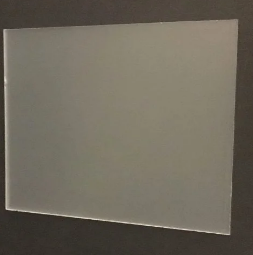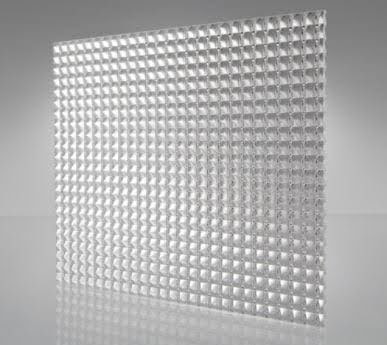
Prismatic vs. Opal: How to Choose the Right Ceiling Light Diffuser Panel for Your Space
Prismatic vs. Opal: How to Choose the Right Ceiling Light Diffuser Panel for Your Space Replacing an old fluorescent light diffuser is one of the
Home » The Role of Light Diffusers in Energy Conservation
Lighting plays a significant role in the overall energy consumption of residential, commercial, and industrial spaces. In an era where energy conservation is at the forefront of sustainable living, light diffusers offer a simple yet effective solution to improve lighting efficiency while reducing energy waste. They enhance the quality of light, minimize glare, and help distribute light evenly throughout a space, making them invaluable for optimizing energy use.
This article delves into the role of light diffusers in energy conservation, exploring how they work, their benefits, and the innovations shaping their future in energy-efficient lighting systems.

There are several types of light diffusers, each suited for different applications and environments:
Light diffusers work by scattering light in multiple directions. When light passes through a diffuser, the surface texture or material composition causes the light to spread out, reducing the intensity of direct beams. This not only reduces glare but also helps illuminate larger areas more evenly, making spaces appear brighter without the need for additional light sources. By minimizing shadows and bright spots, light diffusers create a balanced lighting environment that contributes to both comfort and energy savings.
The most significant contribution of light diffusers to energy conservation is their ability to make lighting systems more efficient. By distributing light evenly across a room, diffusers reduce the need for multiple light fixtures or higher wattage bulbs. This ensures that spaces are adequately lit without over-relying on energy-hungry lighting solutions.
For instance, in large commercial spaces such as offices or warehouses, the use of light diffusers can reduce the total number of fixtures required, as each fixture will cover a larger area more effectively. This not only saves energy but also cuts down on maintenance costs, as fewer bulbs and fixtures need to be installed or replaced.
In addition to improving light efficiency, light diffusers help reduce the heat generated by lighting fixtures. Traditional light sources, especially fluorescent and incandescent bulbs, can produce significant heat, which in turn increases the need for cooling systems like air conditioners, particularly in commercial environments. By diffusing light, the heat is spread more evenly, minimizing hot spots and reducing the strain on cooling systems. This translates to energy savings not just in lighting but in overall climate control as well.
Light diffusers significantly enhance the quality of light in a room. Without a diffuser, light can be harsh and glaring, leading to discomfort or even eye strain. By softening the light and dispersing it evenly, diffusers create a more pleasant environment that is easier on the eyes, making them especially beneficial for office spaces, schools, and healthcare facilities.
In residential settings, diffusers can transform a room’s atmosphere by providing warm, inviting lighting that reduces shadows and enhances visual comfort. This improved light quality contributes to energy efficiency because it eliminates the need for multiple light sources to balance the room’s illumination.
By evenly dispersing light and reducing heat buildup, light diffusers can also extend the lifespan of light fixtures and bulbs. Overheating is a common cause of bulb failure, and diffusers help mitigate this risk by promoting even heat dissipation. This, in turn, reduces the frequency of bulb replacements, contributing to both cost savings and sustainability.

Choosing the right material for your light diffuser is essential for maximizing energy efficiency. Different materials offer varying levels of light transmission and durability:
The design of the diffuser can also affect its energy efficiency. Prismatic designs, for example, help direct light where it’s needed most, reducing wasted light. Meanwhile, aesthetically pleasing designs, such as those used in decorative fixtures, can enhance the room’s appeal while also contributing to more efficient lighting.
When selecting a light diffuser, consider both the functional and visual aspects of the space. Choosing the right design and material can maximize both energy savings and aesthetic appeal.
Installing a light diffuser correctly is crucial for achieving optimal performance. Begin by ensuring the fixture is clean and free of dust or debris, as this can block light transmission. Position the diffuser securely over the light source, ensuring that it fits flush against the fixture to prevent light leakage. Loose or improperly fitted diffusers can reduce their effectiveness and waste energy.
To maintain the energy-saving benefits of light diffusers, regular cleaning is necessary. Dust and grime can accumulate on the surface, reducing light transmission and causing the fixture to use more energy. Use a soft cloth and mild cleaning solution to wipe down the diffuser periodically. For glass diffusers, avoid using abrasive cleaners that could damage the surface.
New materials are being developed to improve light diffusion efficiency while enhancing durability and sustainability. Nano-materials, for instance, offer improved light scattering properties that maximize energy savings. Additionally, recyclable materials are gaining popularity, further aligning with the sustainability goals of modern lighting systems.
Smart lighting systems that integrate with advanced diffusers are becoming increasingly popular in both residential and commercial settings. These systems allow for real-time adjustments to lighting based on the needs of the space, such as dimming during daylight hours or increasing brightness in response to occupancy. Pairing smart lighting with efficient diffusers can result in significant energy savings.
The initial investment in high-quality light diffusers may be higher than traditional options, but the long-term energy savings and extended lifespan of the fixtures make them a worthwhile investment. Analyzing the total cost of ownership, including installation, maintenance, and energy savings, can help justify the upfront cost of premium diffusers.
Some lighting systems may not be compatible with certain types of diffusers, especially when retrofitting older fixtures. In these cases, it’s important to work with a lighting professional to ensure that the diffuser you select is compatible with your existing system and will deliver the energy-saving benefits you seek.
The move toward sustainability is shaping the future of light diffusers. Innovations in materials and manufacturing processes are making diffusers more eco-friendly, with an increased focus on recyclability and reducing carbon footprints.
As governments and regulatory bodies introduce stricter energy efficiency standards, light diffusers will likely play a critical role in helping businesses and homeowners meet these requirements. Future regulations may incentivize the use of advanced diffusers in both new construction and renovation projects.
Light diffusers play a crucial role in enhancing energy efficiency by improving light distribution, reducing the need for multiple light sources, and minimizing heat generation.
By investing in the right light diffusers and ensuring proper installation and maintenance, both businesses and homeowners can significantly lower their energy consumption while enhancing visual comfort. For those looking to upgrade their lighting systems, Fluorolite offers a wide range of high-quality fluorescent and LED light cover replacements, including custom-molded solutions.
Their products are designed to maximize energy efficiency and durability, making them a great choice for any project aimed at reducing energy costs and improving lighting performance.
Acrylic is one of the most energy-efficient materials for light diffusers, offering high light transmission and durability. For more complex applications, Fluorolite offers custom solutions tailored to your needs.
Light diffusers typically last several years but should be replaced if they become discolored or damaged. Regular cleaning can extend their lifespan.
Yes, light diffusers are compatible with LED lighting and can help distribute the light evenly, enhancing energy savings and visual comfort.
By reducing energy consumption and extending the lifespan of lighting fixtures, light diffusers contribute to a lower carbon footprint and support sustainable building practices.

Prismatic vs. Opal: How to Choose the Right Ceiling Light Diffuser Panel for Your Space Replacing an old fluorescent light diffuser is one of the

Tired of Glare? Why Plastic Egg Crate Louvers Are the Solution for Comfortable Lighting Walk into any modern office, school, or large commercial space, and

Beyond Lighting: 5 Creative & Practical Uses for Thin Acrylic Sheets When people hear “Plexiglass” or “Acrylic,” their minds often go straight to lighting diffusers